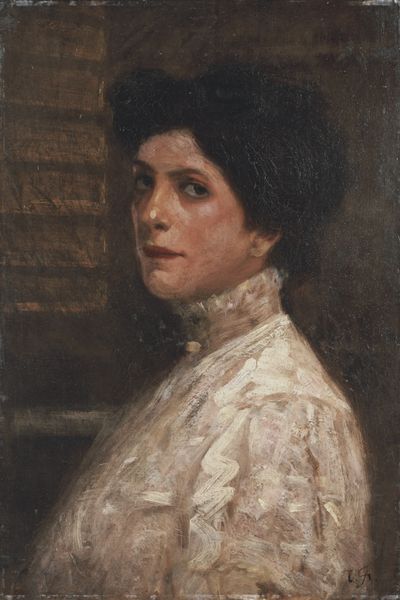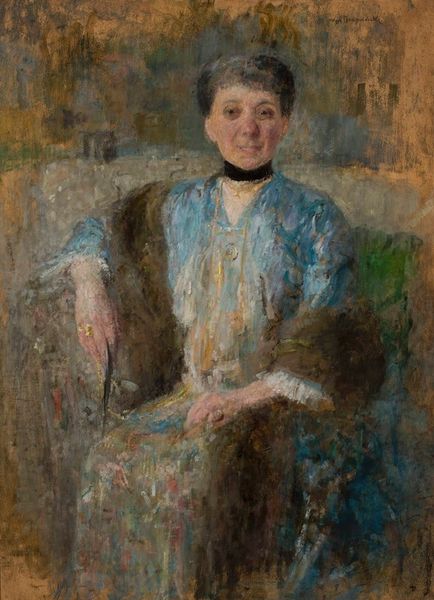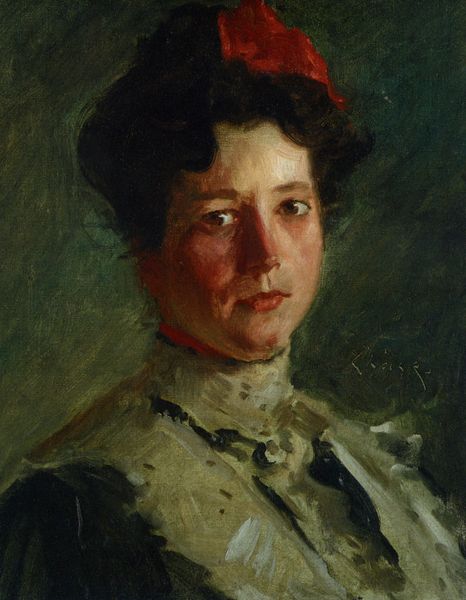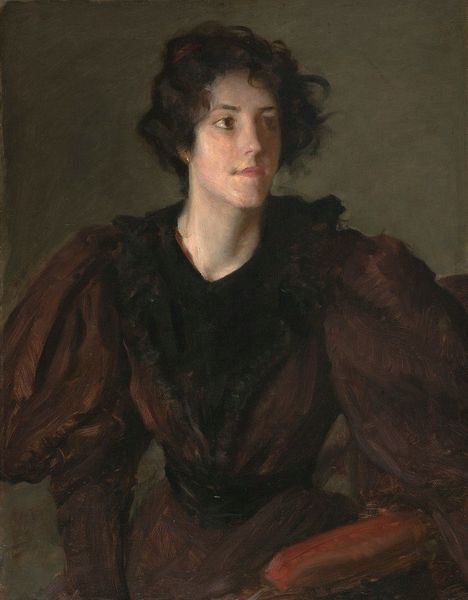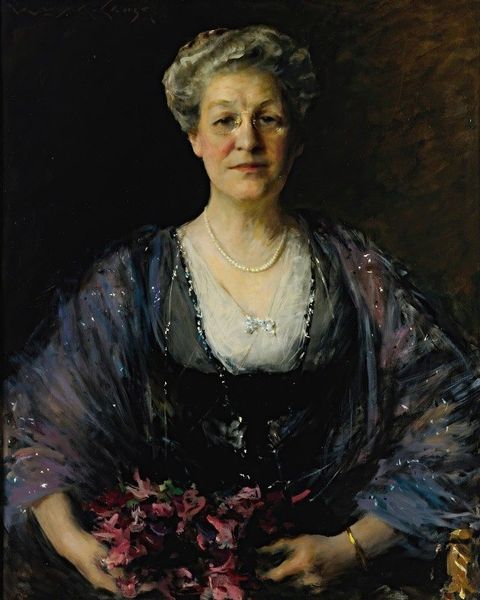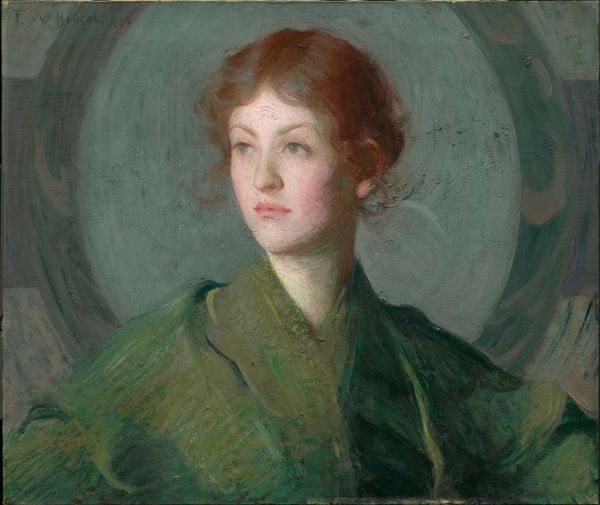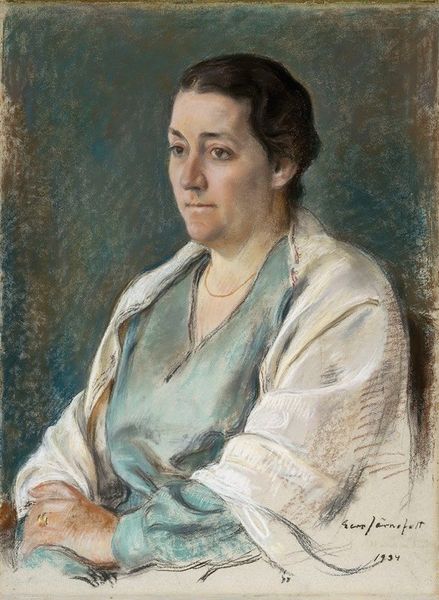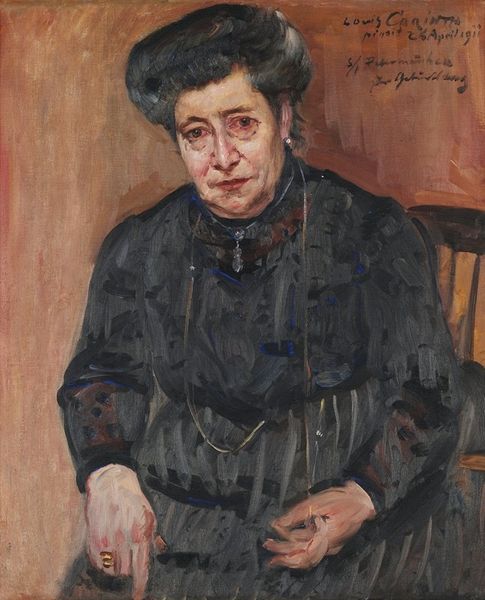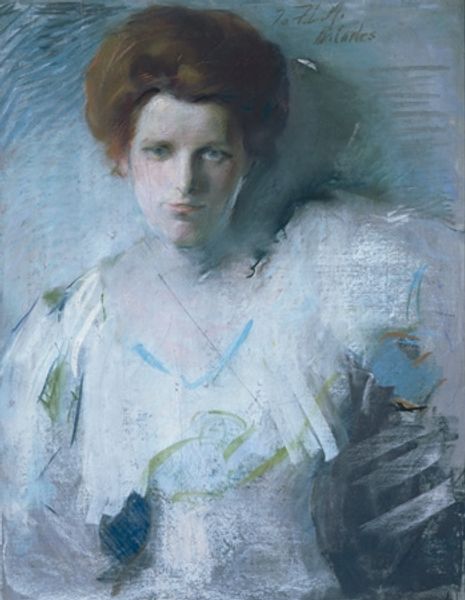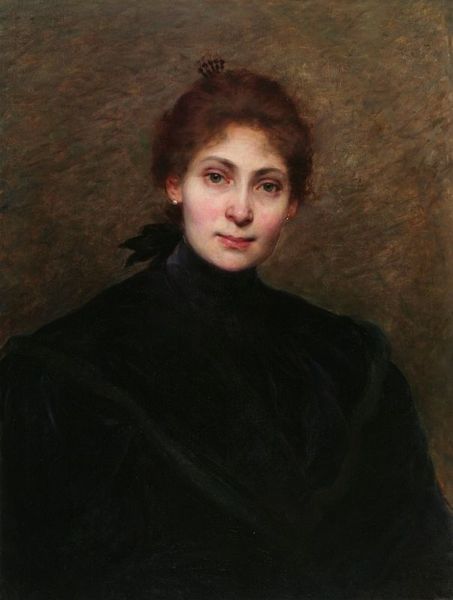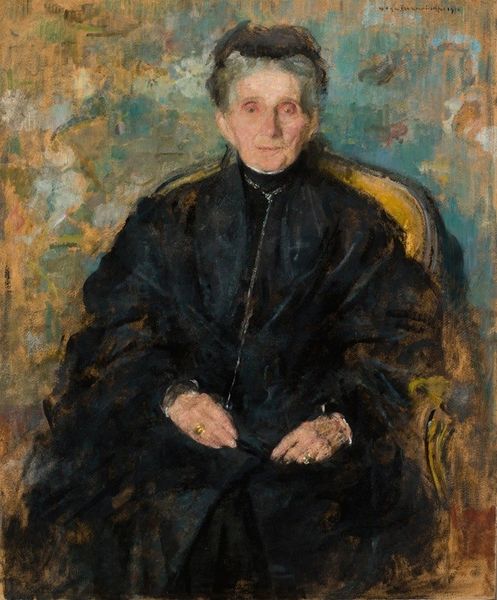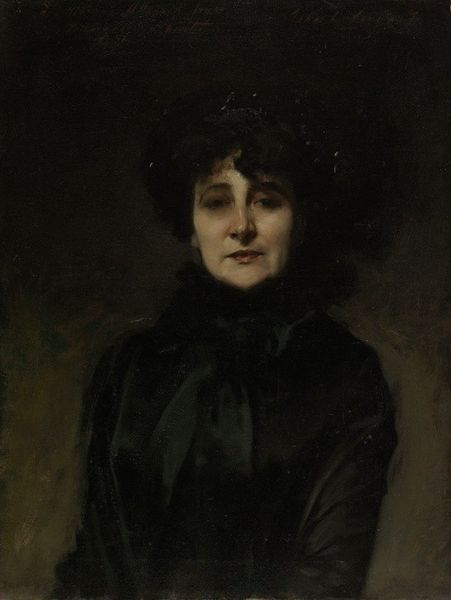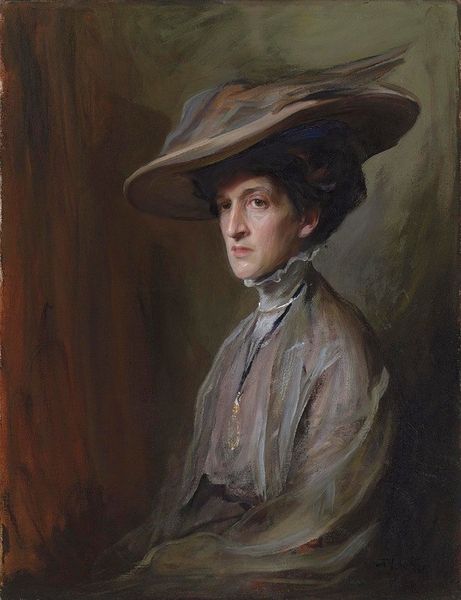
Copyright: Public Domain: Artvee
Editor: This is Edwin Austin Abbey's "Portrait of Mrs. Abbey in pink dress, waist length," made in 1896 using pastel. The unfinished quality of the dress strikes me, like the portrait isn't quite resolved. What do you see in this piece? Curator: For me, the choice of pastel, rather than oil, is key. It speaks to a different kind of artistic labor and production. Pastel was often associated with preparatory sketches or portraits of women. How might the social expectations surrounding Mrs. Abbey, and the role of women in artistic production, have influenced this work? Editor: That’s interesting, I hadn’t thought about pastel being linked to gender. Do you think the dress, so vividly pink yet unfinished, plays into that too? Is it meant to be suggestive of a woman's work never being truly done? Curator: Possibly, and consider also the consumption habits of the time. This portrait suggests an intimacy and accessibility not present in formal oil paintings of the era. The rawness of the pastel lends a different feel, like the piece is speaking directly. Editor: It’s as though the process is part of the message, showing a step towards finishing, making visible a stage of its production. This material view makes me think of it less as an incomplete product and more of a documentation. Curator: Exactly. And that challenges the conventional boundaries between ‘high art’ and perhaps even what was seen as a mere pastime suitable for women. By examining the materials and the means of production, we can reveal a richer narrative than a purely aesthetic reading might allow. Editor: I hadn't considered how materials could reflect social status and artistic labor. This has opened my eyes to understanding the historical weight embedded in the seemingly simple act of choosing pastel. Curator: Precisely! Seeing art through a materialist lens encourages a critical engagement with art’s production and consumption.
Comments
No comments
Be the first to comment and join the conversation on the ultimate creative platform.
